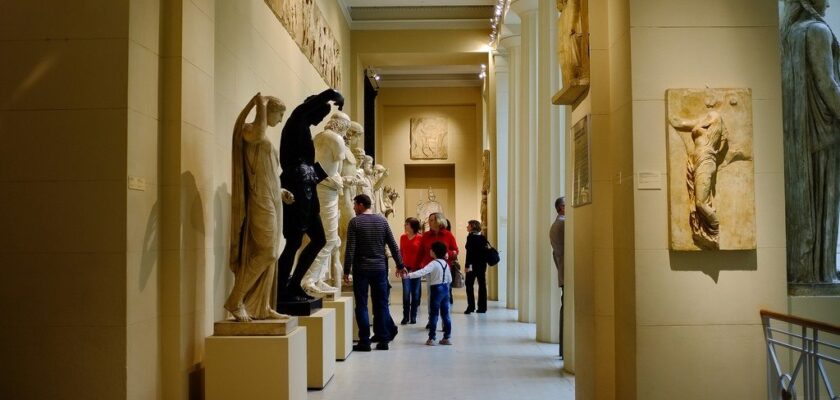Pushkin State Museum of Fine Arts
Pushkin Museum – this is the short name of the Pushkin State Museum of Fine Arts, located in the very center of the capital, on Volkhonka Street. It is called the most academic museum in Moscow, because it has a unique collection of sculptural casts, copies and originals, which can be used to study the entire history of world culture. Magnificently executed museum exhibits-copies, from the Parthenon portico and the statue of Venus of Milos to the portal of the Gothic cathedral and equestrian monuments, are made in life-size, which gives the opportunity to familiarize in detail with the masterpiece works of the great sculptors.
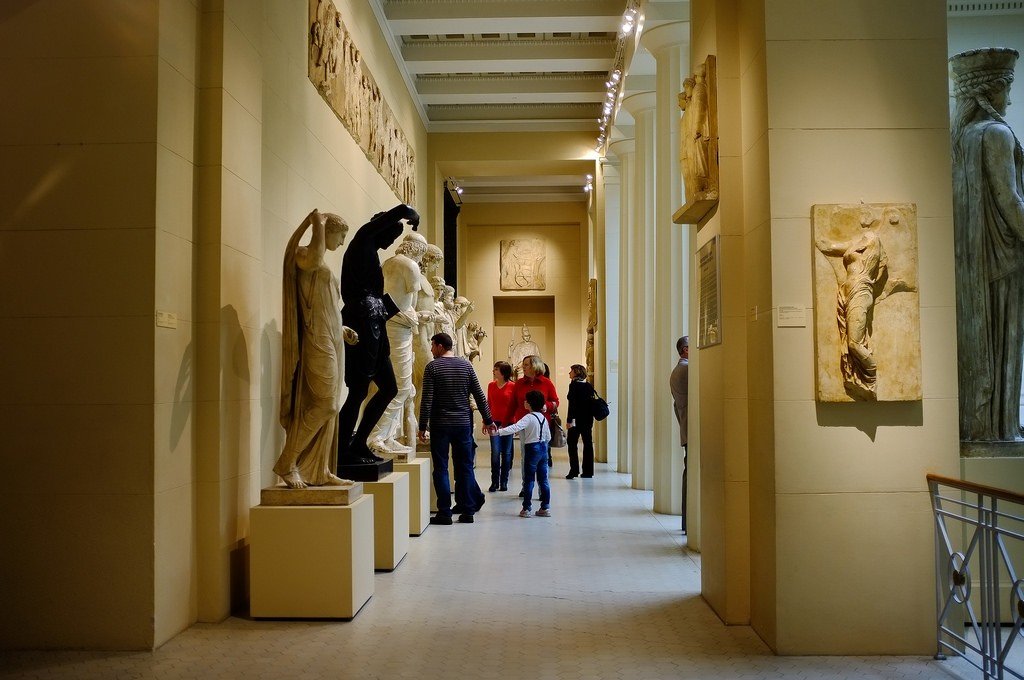
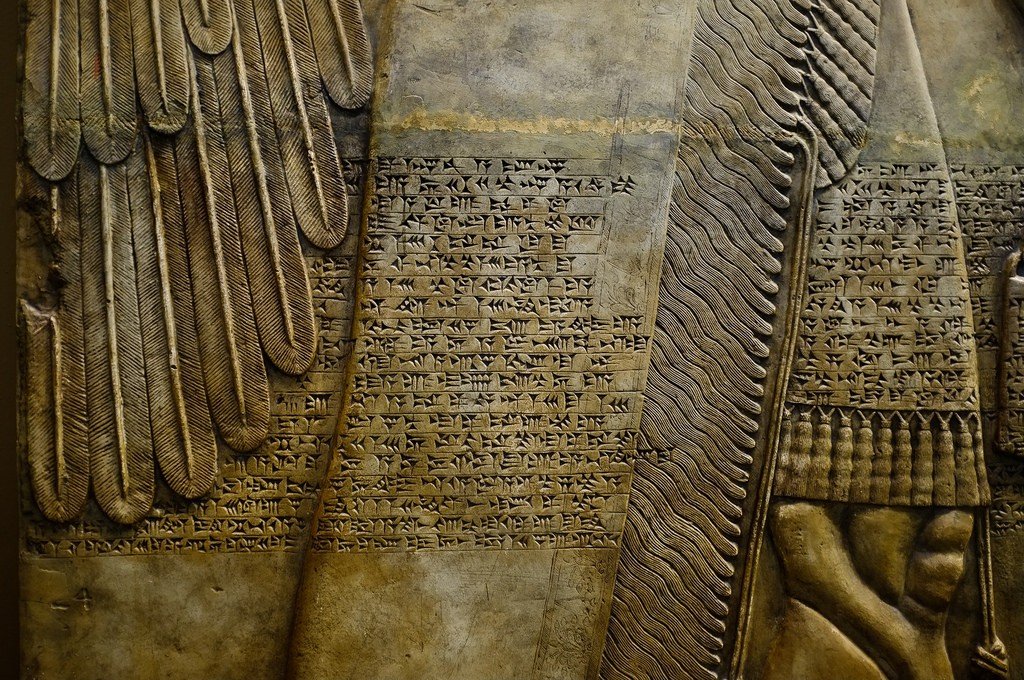
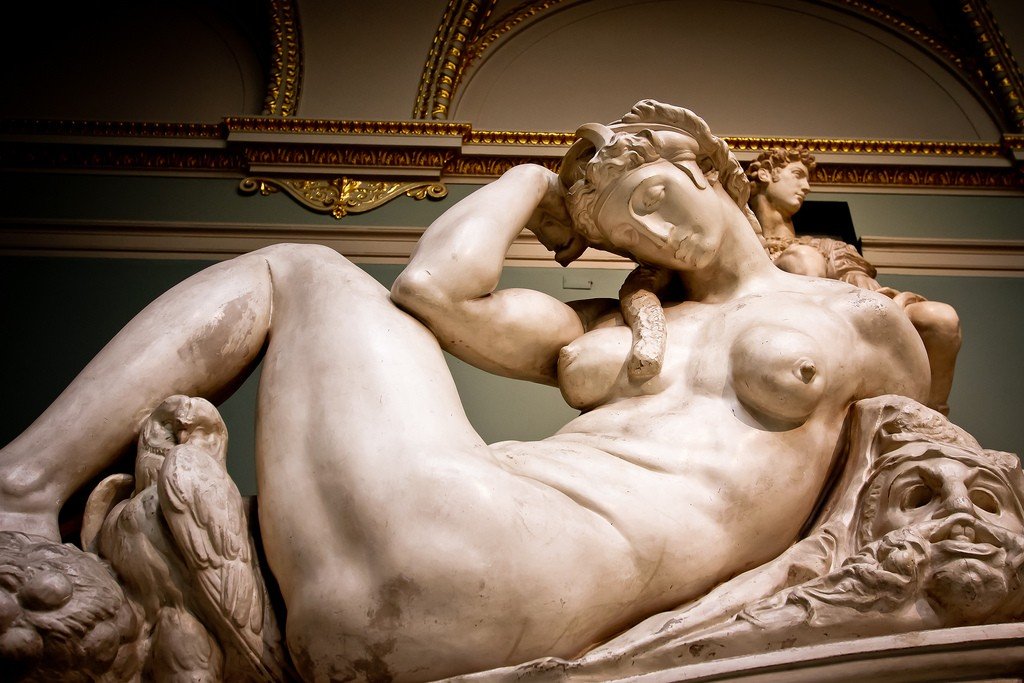
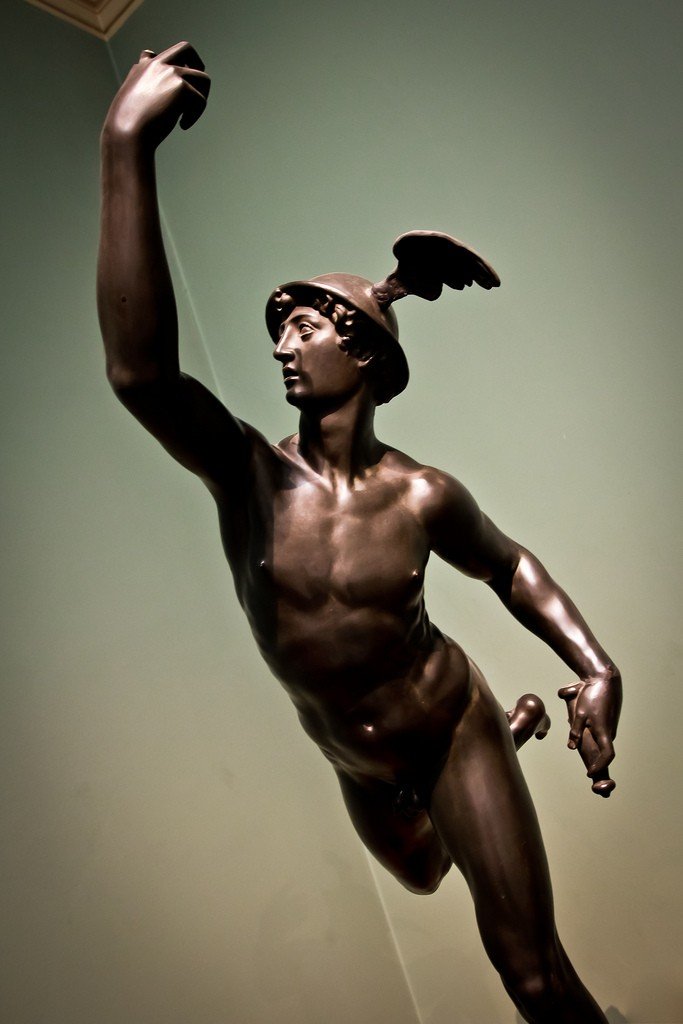
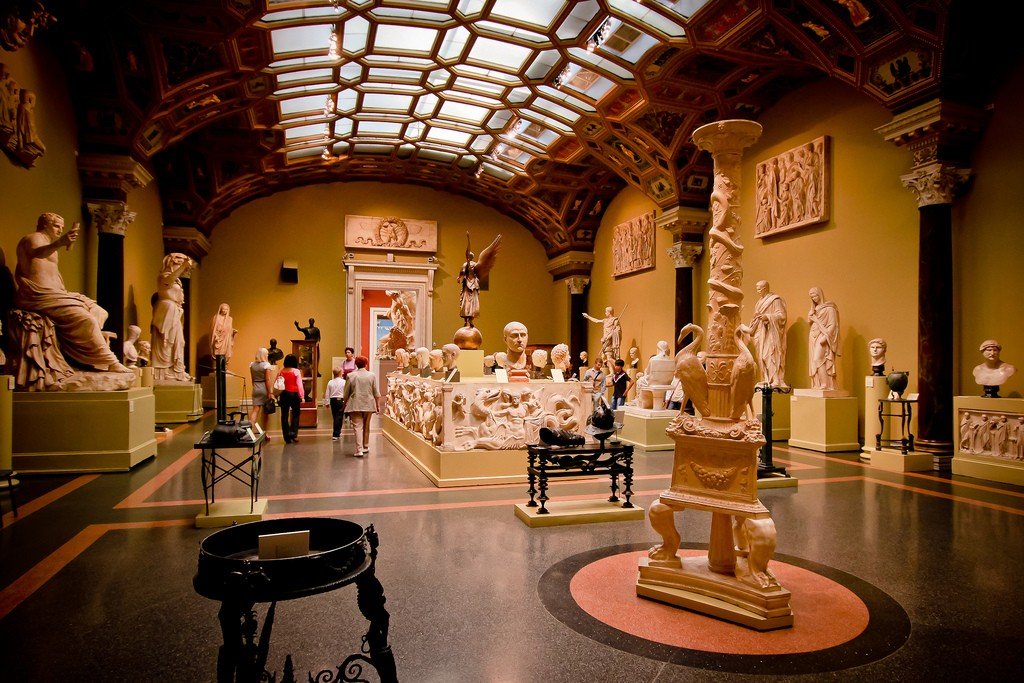
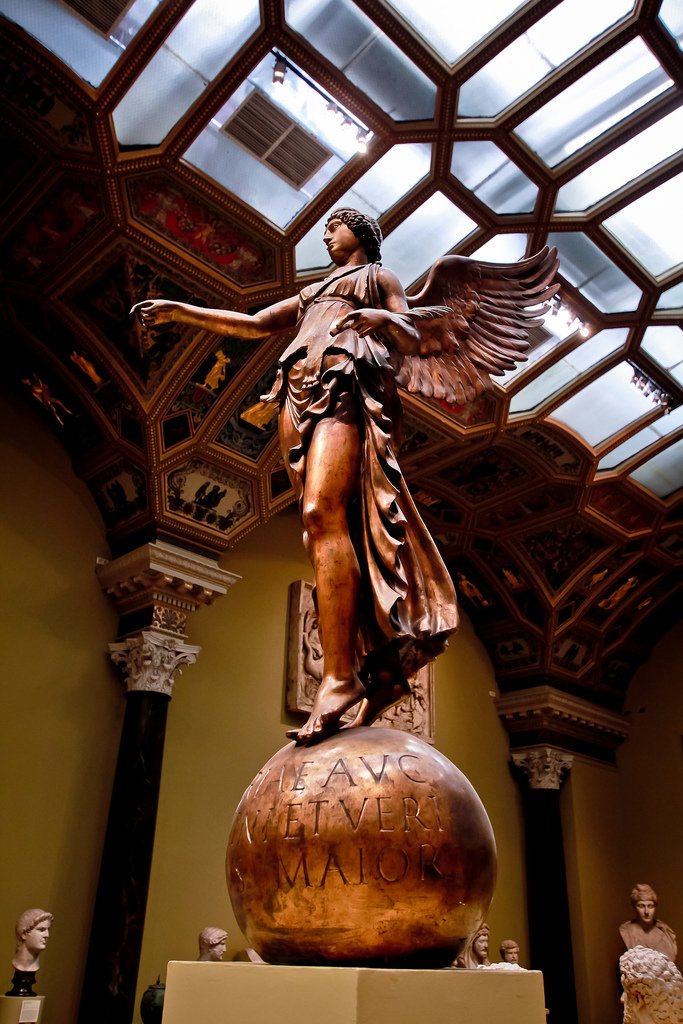
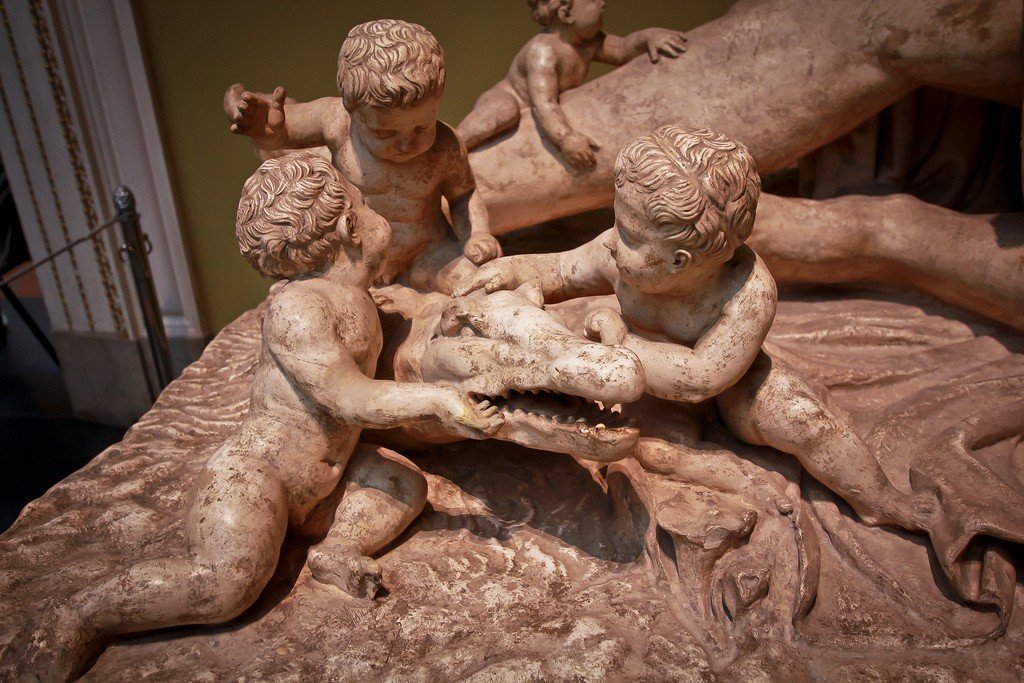
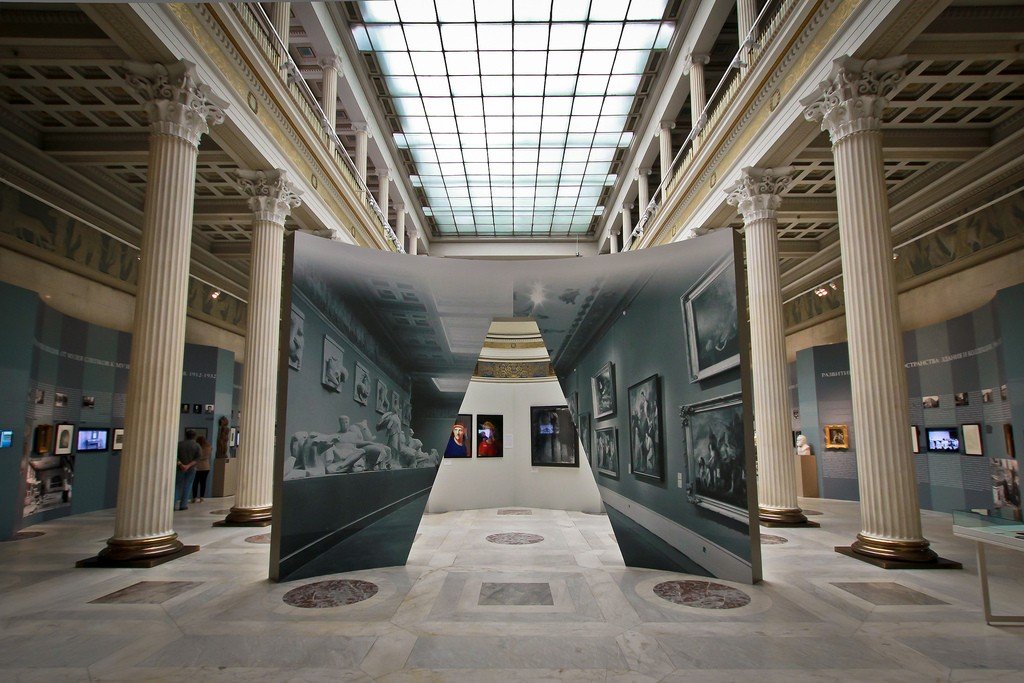
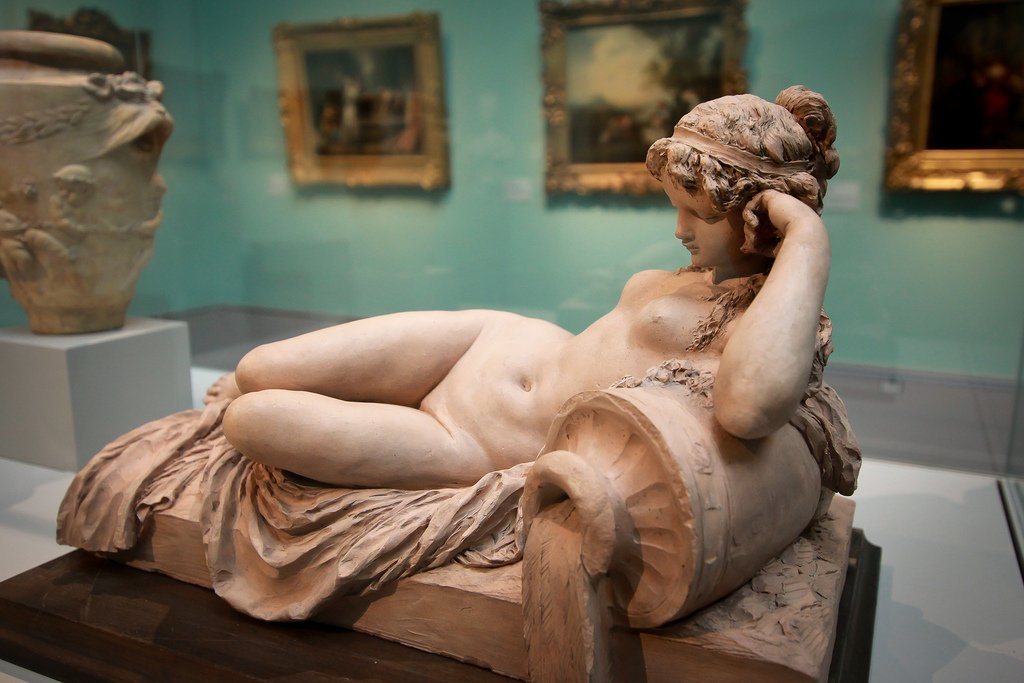
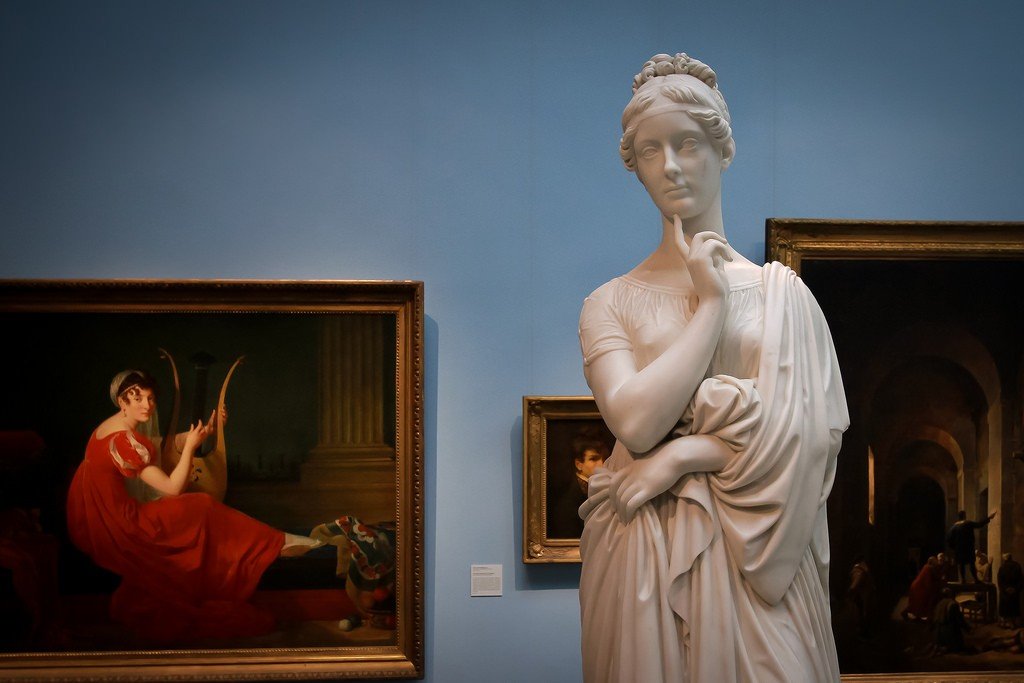
Video: Pushkin Museum
Contents- Highlights
- History of the Pushkin Museum of Fine Arts. I. V. Tsvetaev
- Sviatoslav Richter Memorial Apartment
- Practical information
Highlights
The Pushkin Museum houses one of Russia’s finest collections of foreign paintings. Its earliest exhibits are represented by Byzantine mosaics and icons. The initial stage of development of Western European fine arts is reflected in the works of Italian primitivists, and its heyday is demonstrated by the paintings of geniuses of the Renaissance and Enlightenment eras. The museum is also famous for its collection of Impressionist and Post-Impressionist works. The museum collection also includes Egyptian antiquities, cultural monuments of the East, graphic paintings of Western European and Russian masters, decorative and applied arts, numismatics and archaeological exhibits. The Pushkin Museum periodically “guests” unique exhibits from the collections of other museums, including world-famous ones.
.
The museum’s permanent exposition is housed in several buildings, three of which are located on Volkhonka: The Main Building, the Gallery of Art of Europe and America, and the Department of Personal Collections. The structure of the museum complex includes the Tsvetaev Training Art Museum on the Volkhonka Street. I. V. Tsvetaev Educational Art Museum on Chayanov Street, the Center for Aesthetic Education, located in Kolymazhny Lane, Svyatoslav Richter’s memorial apartment on Bolshaya Bronnaya Street.
.History of the Pushkin Museum of Fine Arts
The Pushkin Museum of Fine Arts traces its history back to August 17 (29), 1898, when in Moscow, not far from the Cathedral of Christ the Savior, on Volkhonka, was laid the Museum of Fine Arts named after Emperor Alexander III. The idea of creating an art-educational public museum in Moscow had been floating in enlightened aristocratic circles since the middle of the XIX century. But it was possible to realize it only at the end of the century, thanks to the deeds of statesman, scientist-historian, art historian, Ivan Vladimirovich Tsvetaev. His daughter, the poetess Marina Tsvetaeva, in her autobiographical essays vividly described the importance of the creation of the museum in the life of the entire Tsvetaev family.
.
The erection of the building of the Museum of Fine Arts was entrusted to a young Moscow architect Roman Ivanovich Klein, who won the competition, the terms for which Tsvetaev developed. For the period of construction of the museum building at Moscow University a Committee for its future arrangement was established. The Chairman of the Committee was Grand Duke Sergei Alexandrovich, whose efforts to build the museum from the state treasury allocated 200 thousand rubles. Yuri Stepanovich Nechaev-Maltsov, an industrialist, millionaire and patron of the arts, who spent about 2 million rubles on construction work and the creation of museum funds, was elected deputy chairman. The work of the secretary of the committee and the actual organizer of all the works was performed by Ivan Tsvetaev.
.The collection fund of the future Pushkin Museum was formed on the basis of the Cabinet of Fine Sciences and Antiquities, which was under the jurisdiction of Moscow University and had a small collection of plaster impressions of ancient sculptures. Since 1889, when the Cabinet was headed by Tsvetaev, its funds began to grow with new additions – copies of Greek, Roman, Egyptian sculptures, which were created in the largest workshops in Europe on the casts taken from the original creations. For the future museum skillful specialists created copies and whole sculptural compositions of virtuoso creators of the Middle Ages, Renaissance, displaying the originals in their true scale.
.
The collection of sculptures was enriched by original masterpieces donated by royalty, aristocrats, industrialists and intellectuals. By its opening, the museum had a collection of ancient Egyptian monuments, works by Italian painters of the XII-XIV centuries, authentic Italian sculptures of the XVI-XVII centuries.
.
In May 1912, 14 years after the foundation stone was laid, the Museum of Fine Arts was ceremonially opened. This event was accompanied by an orchestra performing a pompous cantata written especially for this event. Ivan Tsvetaev took the post of the museum director. In 1923, after the reorganization of the museum network of the country, the museum acquired the status of the State Museum. Within its walls housed a collection of paintings by Western masters, which previously belonged to the liquidated Rumyantsev Museum. Soon it was replenished with paintings from the collections of S. M. Tretyakov, G. A. Brokar, D. I. Shchukin, Princes Yusupov. Priceless works of painting came from the State Hermitage.
In 1932, the Museum of Fine Arts was renamed the Museum of Fine Arts, and five years later it was named after Alexander Pushkin. The year 1948 was marked by major additions: the art gallery of the Pushkin Museum was enriched with almost three hundred works by the most famous Impressionist artists.
In 1985, the Museum of Private Collections opened next to the Main Museum Building in a specially restored mansion. In 2005, it was moved to a nearby building and the Gallery of European and American Art of the XIX-XX centuries took its place.
.
Main building
The main building of the Pushkin Museum, reminiscent of an ancient temple, is decorated with a colonnade, which is an enlarged copy of the Ionic portico of the temple Erechtheion, one of the main sanctuaries of Athens, located on the Acropolis. The facade is decorated with white frost-resistant marble shipped from the Urals, and rare colored marble was used to decorate the front entrance.
.
Ground floor
The halls of the lower floor of the Main Building display collections of art from Ancient Egypt, Antiquity, the Middle Ages, and the Renaissance.
More than eight hundred exhibits in the hall of Ancient Egyptian art, decorated in the style of an ancient Egyptian temple, represent all periods of the history of the development of this civilization, from the IV millennium BC to the IV century BC. The rich exposition is represented by stone sarcophagi, statues, household items and funerary cult of the Egyptians, human and animal mummies, papyrus, vessels and jewelry, amulets. This collection is one of the first acquisitions of the museum. It was purchased in 1909 from the St. Petersburg orientalist V. S. Golenishchev, who had a rich collection of original Egyptian antiquities..
In the hall, where samples of art of the Ancient Near East are demonstrated, you can see copies of bas-reliefs that decorated the palaces of Assyrian kings. The hall itself is decorated on the motifs of the painting of the royal palaces. At the entrance to the hall there are giant sculptures of winged bulls and lions with human heads. The sculptures are copies, the originals are in the Louvre and the British Museum. The pride of this room’s collection is the cuneiform tablets, which depict three thousand years of ancient Mesopotamian history. Ancient Parthian art is represented by ritual vessels carved from elephant tusk, Iranian art by a relief depicting the head of a Persian archer and chalcedony seals – magnificent examples of glyptics (the art of carving on colored and precious stones).
.On the first floor of the Main Building of the Pushkin Museum there is also a hall where the famous collection, often called “The Gold of Troy” or “Priam’s Treasure”, is displayed. It includes 259 artifacts found by Heinrich Schliemann during the excavations of Troy in the late XIX century. Among the exhibits of the collection are gold and silver vessels, magnificent gold diadems, earrings, rings, beads and bracelets. Of interest are also ritual axes-hammers, one of which is made of lapis lazuli, and three – of jade and jadeite.
.In a separate hall is a collection of ancient artifacts. The first section is devoted to the art of ancient Cyprus, the second to ancient Greece, the third to ancient Italy, and the fourth to Rome. Among the exhibits are samples of decorative and applied art: vessels made of glass and ceramics, mosaics and fragments of fresco paintings, household items made of bronze.
.In the hall where the art of the Northern Black Sea coast is presented, you can see exhibits found during excavations of Panticapaeum, the capital of the Cimmerian Bosporus. Among the artifacts dating back to the VI-V centuries BC are Attic vessels, jewelry boxes, a unique Panticapaean bath decorated with friezes of palmettes and lotus flowers. There is also a carved frieze depicting a chariot race. Among the finds dating back to the IV century, the bowls covered with black lacquer, kanfar with magnificent ornamentation, original lamps are of interest. The decoration of the exposition is a white marble sculpture of the head of a female deity and a statue of the ruler of the ancient city of Georgippia – Neocles.
.
In a separate hall, also located on the first floor of the Pushkin Museum, are collected exhibits relating to the Greco-Roman period of Egyptian history (IV century BC – IV century AD). Here you will see painted plaster funerary masks, the accuracy and realism of which are comparable to classical Roman sculptural portraiture, and the so-called Fayum portraits, skillfully painted on the thinnest plates of cypress bark with tempera or wax paints. In Hellenistic Egypt they replaced traditional funerary masks. Coptic art is represented by spectacular woven products – articles of clothing, secular and ecclesiastical, tunics, shawls, bedspreads, tablecloths.
.
One of the most beautiful halls of the Pushkin State Museum of Fine Arts is the Greek Court. Here you can admire life-size copies of statues and reliefs of the Parthenon, porticoes of Erechtheion and the temple of Hephaestus in Athens, skillfully created model of the Acropolis.
.The Italian courtyard is no less spectacular. The design of the hall where it is located, repeats the style of the courtyard of the luxurious Florentine palace Bargello. The central place here is occupied by copies of two equestrian monuments created by the greatest masters of the Early Renaissance – Donatello and Verocchio. The replica features a Renaissance masterpiece, a statue of David by Michelangelo.
.
Next, on the first floor, explore the painting collection, which includes authentic Byzantine icons and works by Italian masters from the 13th through 16th centuries. The most famous of the Byzantine icons displayed here are the Twelve Apostles and Christ Pantocrator. Among the masterpieces of Italian masters are Botticelli’s “Annunciation”, Giovanni Batista Cima da Conegliano’s “The Mourning of Christ with a Carmelite Monk”, Dosso Dossi’s “Landscape with Scenes from the Life of Saints”, Giulio Pippi’s “Lady at the Toilet.”
.The neighboring hall displays original paintings by German and Netherlandish painters of the XV-XVI centuries. The pride of the collection is the paintings “The Scourging of Christ” by German painter Johannes Kerbeke, “Madonna and Child” by Lucas Cranach the Elder, also a representative of the German school. Admire the works of Dutch artists: “Male Portrait” by Jan Gossart, “Bearing the Cross” by Michel Zittow, “In the Marketplace” by Joachim Bekelear, and “Christ and the Samaritan Woman” by Pieter Aertsen.
.The Baroque and Rococo era is represented by the creations of Italian painters of the XVII-XVIII centuries. This thematic composition includes canvases by Pietro da Cortona, Luca Giordano, Bernardo Cavallino, Panini, Canaletto, Francesco Guardi.
.Separate halls are devoted to works by painters of Spain and France, executed in the XVII century. Canvases by French artists of the XVIII – early XIX centuries are placed in their own exposition.
.Second Floor
On the second floor of the Pushkin Museum there is a hall called the Olympic Hall. Here plaster casts of the most famous sculptures of the Greek Classical era are displayed. Among these expressive exhibits are the pediments of the temple of Athena Aphaia, a sculptural group depicting the real heroes Harmodius and Aristogiton, reliefs of the altar known as “Ludovisi’s throne”, in the center of which the sacral birth of Aphrodite from the foam of the sea is depicted. Decorating the hall are plaster copies of the works of the great Greek sculptor Myron – “Discobolus” and the sculptural group “Athena and Marsyas.”
.
In a separate hall you can learn about the culture of the Aegean world. Here are copies of objects dating from the 3rd millennium BC to the 6th century AD. Here are exhibited vessels found during the excavations of ancient Troy, ritual statuettes of priestesses from Crete, funerary masks from the royal tombs of Mycenae, sculptures of Artemis of Delos, Apollo from the island of Melos, the statue of Hera.
.A separate exposition is devoted to the art of the Greek Late Classical and Hellenistic period. Here you will see casts from the original works of the greatest sculptors of the IV-II centuries BC – Skopas, Praxiteles, Lissipus, Leohara. Among them are “The Fierce Maenad”, “Resting Satyr”, “Apollo Savrakton”, statues of Aphrodite of Cnidus, Apollo of Belvedere.
.The section devoted to the art of Ancient Italy and Ancient Rome displays casts, bronze casts from sculptures created during the Roman Empire. Among the exhibits, also presented in this hall, are reproduced in galvanoplasty Roman household items, as well as elements of gladiators’ ammunition. The decoration of the hall itself creates an idea of the traditions characteristic of Roman architecture. The interior combines motifs of the decor of the “Golden House” of Nero (I century BC) and thermae Diocletian (turn of the III-IV centuries AD): arches, columns decorated with luxurious Corinthian capitals, richly painted ceiling.
.
A separate hall is dedicated to the history of Italian sculpture of the XV century. Its vaults are decorated with spectacular panels with panoramas of Florence, Venice, Siena. Among the most expressive works – a copy of a fragment of the Florentine Baptistery “Paradise Gate”, casts from reliefs of the portal of the church of San Petronio in Bologna, a copy of the statue of Donatello’s “St. George.”
. In a special hall, located on the second floor of the Pushkin Museum, you can see plaster copies of works by the greatest master of the Renaissance – Michelangelo Buonarroti. Among them are “Bacchus”, “Pieta”, “Moses”, “Dying Slave”.”.
The hall where the art of Flanders of the XVII century is presented is one of the most visited in the Pushkin Museum. Here you can admire the works of Rubens, van Dyck, Bruegel, Sneijders – the brightest representatives of the Flemish school of painting.
.
The hall dedicated to the brilliant Netherlandish painter Rembrandt presents drawings, etchings and six canvases by the master. A separate exposition is devoted to works by other Dutch painters of the 17th century.
.
Gallery of Art of Europe and America of the XIX-XX centuries
The Gallery, located in the neighborhood of the Main Building of the Pushkin State Museum of Fine Arts, occupies the left wing of the estate, which from the XVII to XIX centuries belonged to the Princes Golitsyns. Back in the 60s of the century before last, the outbuilding housed an art gallery accessible to citizens, and artifacts of the antique era from the personal collection of the owners were displayed here. It can be said that the Gallery housed here took up the baton of the Moscow aristocrats’ tradition of collecting the best works of world art.
.
The Gallery’s 26 halls display works by masters of European painting and sculpture of the 19th and 20th centuries. The exposition of this part of the Pushkin Museum represents various currents in the art of that period.
One of the halls displays paintings by German masters of the beginning of the century before last: Caspar David Friedrich and the Nazarene artists, who revived the manner of painting of the Middle Ages and Early Renaissance.
.The Spanish school of painting is represented by the works of Francisco Goya. In a separate hall you can see works by French artists – participants of the Paris Salon: Jean Jerome, Paul Delaroche, Eugène Louis Izabe. A special exposition is devoted to the French masters of the realist direction in painting.
.
The pride of the Pushkin Museum is a collection of works by French artists who created in the style of Impressionism and Post-Impressionism. Among the authors of the paintings are Monet, Renoir, Degas, Camille, Pissarro, Cézanne, van Gogh, Gauguin, Matisse, and Picasso.
.
Recently, the museum opened a new exposition, where works by representatives of other European schools are shown, as well as works by American masters. It features paintings by Wassily Kandinsky, Marc Chagall, Achille Funi, Volker Beringer, and Rockwell Kent.
>
In a special hall you can admire sculptures by major European sculptors – Auguste Rodin, Antoine Bari, Aristide Maillol, Emile Bourdelle.
.Personal Collections Department
The exposition of this department of the Pushkin State Museum of Fine Arts presents about thirty collections of works of art donated to the museum by private individuals. In the funds of the department there are more than 7000 works of Russian and Western European masters of the XV-XX centuries, whose work is represented in graphics, painting, sculpture, applied art, photography.
.
To date, the main exposition of the Personal Collections Department is not available for viewing. The Department plans to resume operations in 2019.
Tsvetaev Art Museum. I. V. Tsvetaev
In the seven halls of this department of the Pushkin Museum there is an exposition introducing visitors to the main stages of the development of world art, starting from ancient times to the 16th century.
There are 750 casts and copies of the most significant objects representing the art of Ancient Egypt, Ancient Asia, Ancient Greece, Rome, the Middle Ages and the Renaissance are also displayed here..
Sviatoslav Richter Memorial Apartment
The apartment on the 16th floor of the Bolshaya Bronnaya building, which the great pianist, who lived here with his wife Nina Dorliak, bequeathed to the Pushkin Museum, has a special atmosphere that preserves the musical and family traditions of its owners.
>
In the living room, where Richter rehearsed, one can see two rare Steinway & Sons pianos, antique floor lamps (they were given to the pianist by the mayor of Florence), and several paintings. In the study there is a library and records, cassettes with recordings of the musician’s concerts, as well as notes with his notes. A small room exhibits pastels belonging to the brush of Richter, who also had artistic talent.
.Practical information
The main building of the Pushkin Museum and the Gallery of European and American Art, located on Volkhonka, respectively in houses No. 12 and 14, are open to the public on all days of the week except Monday. On Tuesdays, Wednesdays and weekends they work from 11:00 to 20:00, on Thursdays and Fridays – from 11:00 to 21:00.
.
It is convenient to get here by subway, reaching one of the three stations: “Kropotkinskaya”, “Borovitskaya” or “Lenin Library.
.
The comprehensive cost of visiting the Main Building and the Gallery is 550 rubles. For children under 16 years of age, admission is free. Visiting one of the two divisions of the Pushkin Museum separately will cost 300 rubles. Excursions are paid separately, their cost – from 400 rubles per person.
.At the Main Building of the Pushkin Museum and Gallery often line up, especially on the days of traveling exhibitions, so many people prefer to buy tickets online on the museum’s website. The paid ticket is issued at the ticket office located in the Gallery. You can then enter the Main Building through entrance No. 5. You will find yourself on the basement floor, where there is a checkroom, restrooms, cafe, where you can eat delicious, hearty and inexpensive food. Near the entrance to the cafe there is a counter where you can take an audio guide. Its cost is 350 rubles + deposit (2000 rubles or passport). You can use the audio guide for free by installing the izi.TRAVEL application on your cell phone.
.The basement floor also sells souvenirs, illustrated publications representing all collections of the Pushkin Museum.
.The entrance ticket to the Pushkin Museum of Art. I. V. Tsvetaev Museum of Art costs 100 rubles.
.
To visit the Memorial Apartment of S. Richter can be by appointment. The cost is 200 rubles. Excursion with a guide (350 rubles) includes watching a movie accompanied by music. Chamber concerts are often held here, the price of tickets for them is negotiated separately.
.